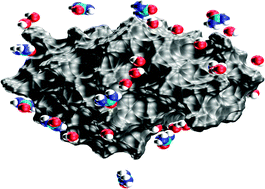On the stability of chymotrypsin inhibitor 2 in a 10 M urea solution. The role of interaction energies for urea-induced protein denaturation
Abstract
Molecular dynamics simulations of chymotrypsin inhibitor 2 in both water and in 10 M urea have been compared with respect to the energies of interaction between protein and solvent. The analysis yield clear and detailed information regarding the enthalpic driving force of urea-induced protein denaturation. The protein is kept in the folded structure by applying positional restraints on the α-carbons, thereby creating an equilibrium system from which appropriate driving forces for denaturation can be obtained. All protein atoms are classified as belonging to the backbone, the polar side chains or to the hydrophobic side chains. The interaction energies are extracted for each class separately. The commonly proposed mechanisms of urea denaturation, i.e. that urea interacts mainly with the backbone or with the hydrophobic side chains, can then be tested. The results show that urea decreases the Lennard-Jones interaction energies between protein and solvent by a large amount. The electrostatic energies are almost unaffected by the switch of solvent. The energetically favorable interaction between CI2 and the urea solvent will function as a driving force for the protein to increase its solvent accessible surface area as compared to the folded protein in water. The magnitude of the decrease in the Lennard-Jones energies for the hydrophobic and the hydrophilic side chains and for the backbone were similar. We therefore conclude that urea interacts favorably with the whole protein surface and that all parts of the protein are important in urea-induced denaturation.


 Please wait while we load your content...
Please wait while we load your content...